I did say, when I began this series, that despite it being called ‘Beautiful Destroyers’, not all the aircraft featured would be military aircraft.
And today’s aircraft is the first civilian aircraft I am featuring in the series. The Cessna 152, first manufactured in 1977 and produced until 1985. The ‘152 is probably the most popular basic training aircraft in the world. Multitudes of pilots have learned to fly in this aircraft; it is steady and reliable, easy to fly, and a real delight. It’s a bit cramped with two people on board, but it does have a better load-carrying capacity than the Piper PA-38 Tomahawk, another popular training aeroplane (and the type I fly at present).
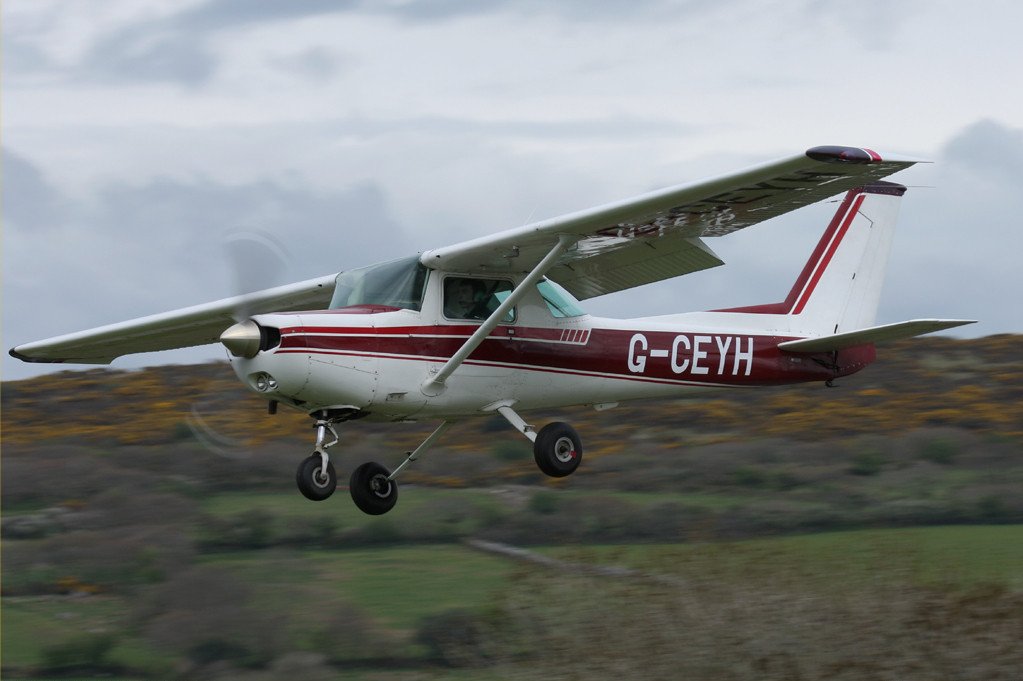
The C152 has a maximum ‘never-exceed’ airspeed of 174kt (1kt = 1.14mph), a speed we’d never get near in practical flying, as at that speed the tail reportedly falls off. Maximum normal level speed 110kt; economical cruise speed 90kt or as near to 100mph as makes no difference. Ceiling (maximum altitude) is reportedly 14,500ft but all the Cessnas I have ever flown can make 10,000ft but will struggle to go any higher; there’s not a lot of oomph left by the time you get up there. Not that we can take them any higher than that anyway, as most Flying Clubs have rules routinely restricting pilots to 10,000ft due to lack of oxygen at altitudes any higher than that. Certainly at 10,000ft you can feel your heart beating faster, tingling in your fingers and toes, increased respiration rate and a slight dizziness; all signs of impending hypoxia (oxygen starvation).
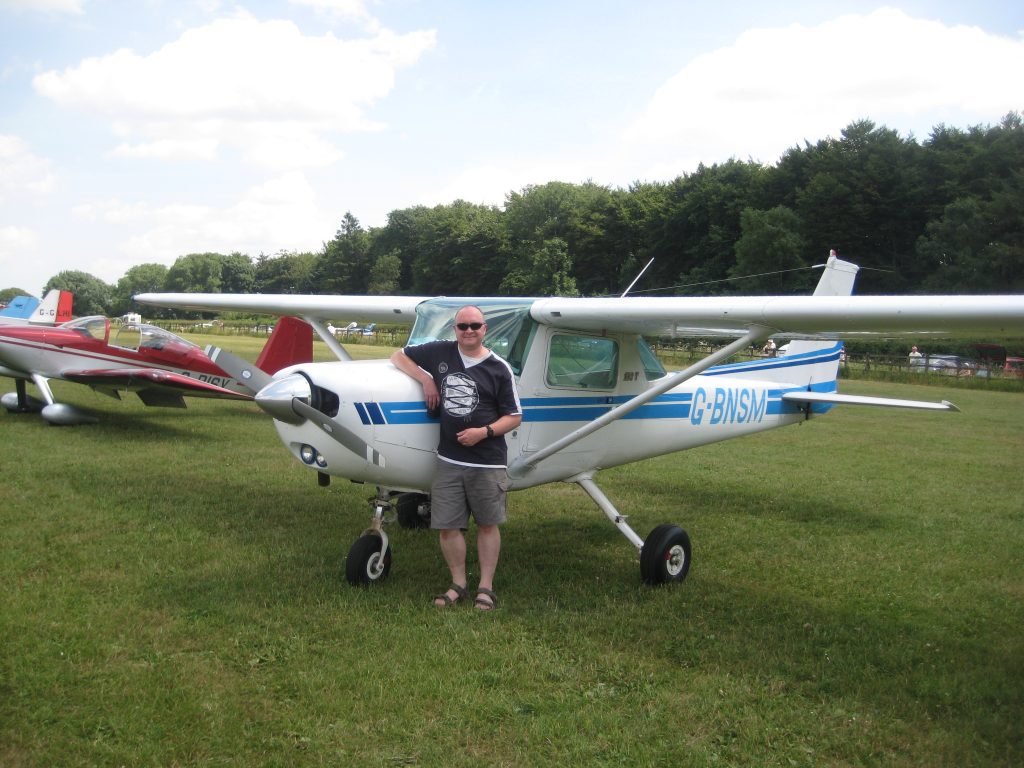
I learned to fly on the C152, at Plymouth Airport in Devon. During that time, I discovered that different aircraft of the same type can have very diferent handling characteristics, and so the Pilot develops a preference for certain specific aeroplanes over others of the same type, based on the ‘feel’ of the aeroplane. My favourite aircraft at Plymouth was C152 G-BSTO, ‘Tango-Oscar’. She had such lovely clean, sharp, responsive handling characteristics, along with an engine of decent power and decisive power response, I couldn’t help but favour her over the other two Cessnas at Plymouth Flying School. She always felt like an extension of my body – well, actually, all aeroplanes that I fly do, but especially Tango-Oscar. And she was the aeroplane in which I flew my first solo, which is described here. Tango-Oscar now lives at Newquay airport (just 20 miles from Bodmin), with the flying school there, and it was always strange, when flying out of Bodmin, occasionally to hear Newquay Radar talking to ‘Golf-Tango-Oscar’ and have to resist the temptation to reply to them. It took some getting used to to remember that someone else was flying Tango-Oscar at the time, and Newquay Radar weren’t actually talking to me. Here’s Tango-Oscar taxying at Cardiff Airport, with an unknown Pilot in command:
(The header image of this post shows me taking off from Bodmin in Tango-Oscar, in May 2009. The full story can be found at the bottom of this post).
Here’s another picture of Sierra-Mike at Compton Abbas in July 2013, this time on the ground and taxying for departure with David in command:
Note the elevator is fully raised – stick right back – and this has the effect (which can be clearly seen) of raising the nose away from the ground, to minimise the chances of a prop-strike (that’s where the propeller chews into the ground). It doesn’t do either the prop or the ground much good if that happens.
Finally for Sierra-Mike, here is the original photo, taken by an unknown photographer, that I use in my blog’s header image. It shows me flying Sierra-Mike down short finals for Runway 26 at Compton Abbas, 14th July 2013:
What is it that I love about the Cessna 152? Well, she has clean lines, a simple, uncomplicated design, docile and gentle handling characteristics, she’s easy yet still fun to fly, stable and reliable, and I am so familiar with the type that when I fly one she, more than any other aircraft type, feels like a part of me, like an extension of my body and senses.
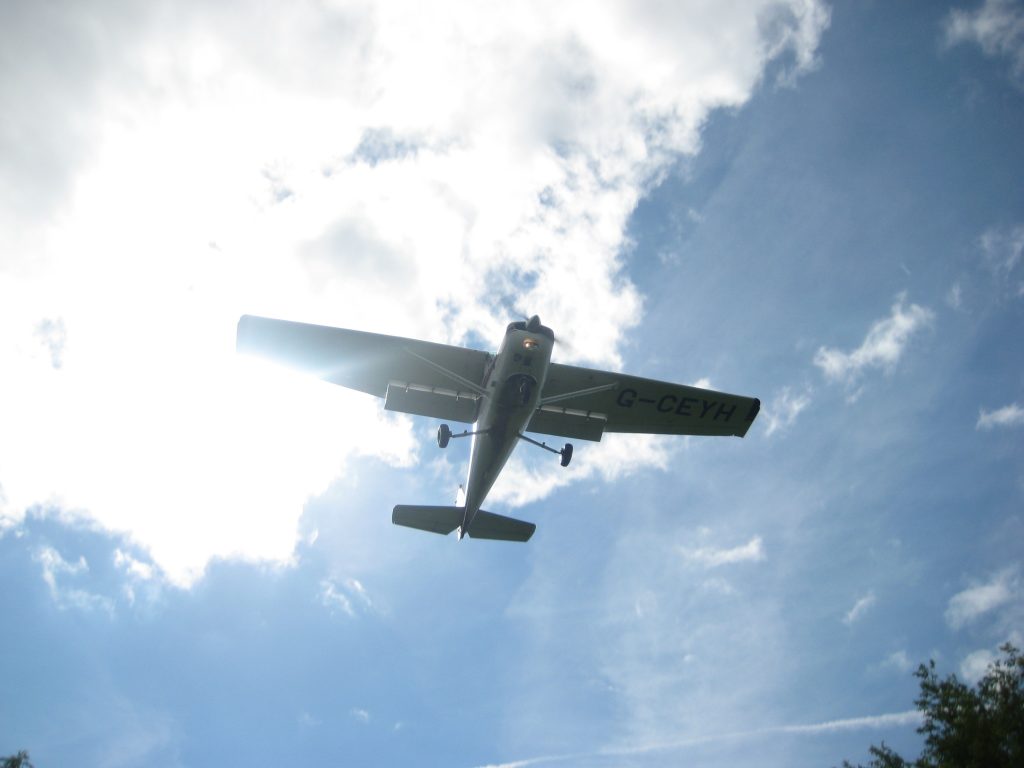
What’s it like to fly a Cessna 152? Well, for starters, here’s the instrument panel on Tango-Oscar, in flight over Teignmouth, Devon, en route to Exmouth at 2,250ft, looking from the passenger seat. It looks complicated at first, but believe me, you soon get used to all those switches and dials. It’s not so much, ‘What does that one do?’, but that you need some information, like ‘How fast are we going?’, and so you know to look at the airspeed indicator, which is the top left dial. Or you need to perform a task, like go into a climb, so it’s throttle to full power (the black knob next to the red Mixture control knob) and up you go. The picture is fully zoomable; click it once to download it to your browser, then click again to zoom, and scroll around as you like. many of the controls are actually labelled with a little caption saying what they do. You might find it interesting to take a closer look.
And another shot, this time a pilot’s eye view of the panel of Yankee-Hotel, again in flight, levelling out at 3,000ft and just finishing the turn on to heading:
And finally, here’s a little video shot by my friend Steve, where you get to see what it’s like to fly in one of these beauties (Yankee-Hotel) in short-field, grass-strip operations from Bodmin Airfield. Startup, taxying, takeoff, then rejoining the circuit (we’d probably been off to bomb Colliford Lake or something), final approach and landing. Points to look for: the building whine of the instrument gyros spinning up; the call of ‘Clear prop!’ before engine start; the bumpy ride on the takeoff roll (grass runway!) transitioning instantly to smoothness as she gets airborne; the final approach with the runway getting bigger; a little bit of sideslip at 5:50, where I dip the nose to lose a bit of excess height, and the extremely quick landing (not as rough as it looks) with hardly any hold-off at all. This was because it was a short-field landing: a landing flown with airspeeds ‘on the back of the drag curve’ at about 55kt or so. This means that as the nose is raised, the airspeed decays very rapidly and the aircraft comes down quite quickly. Which is what you need if you’re on a short runway. We were down, and slowed, and off the runway in 200 yards or less. That’s how it’s supposed to be done!
So, there she is. The Cessna 152, probably my all-time favourite aeroplane to fly, and for reasons that are probably obvious by now!
For more information on the Cessna 152, check out the Wikipedia entry on the type here.
Edit: You could in fact call the Cessna 152 a ‘Beautiful Destroyer’ in that we regularly used them to ‘attack’ the dams on local reservoirs. Tip in towards the target, a shallow dive to pick up airspeed, then race across the water at low level and high speed. Call ‘Bombs away!’ and then a sharp, high-g pull-up into the vertical and climb away. Most exhilarating, tremendous fun, and your grin is fixed for at least a week afterwards.

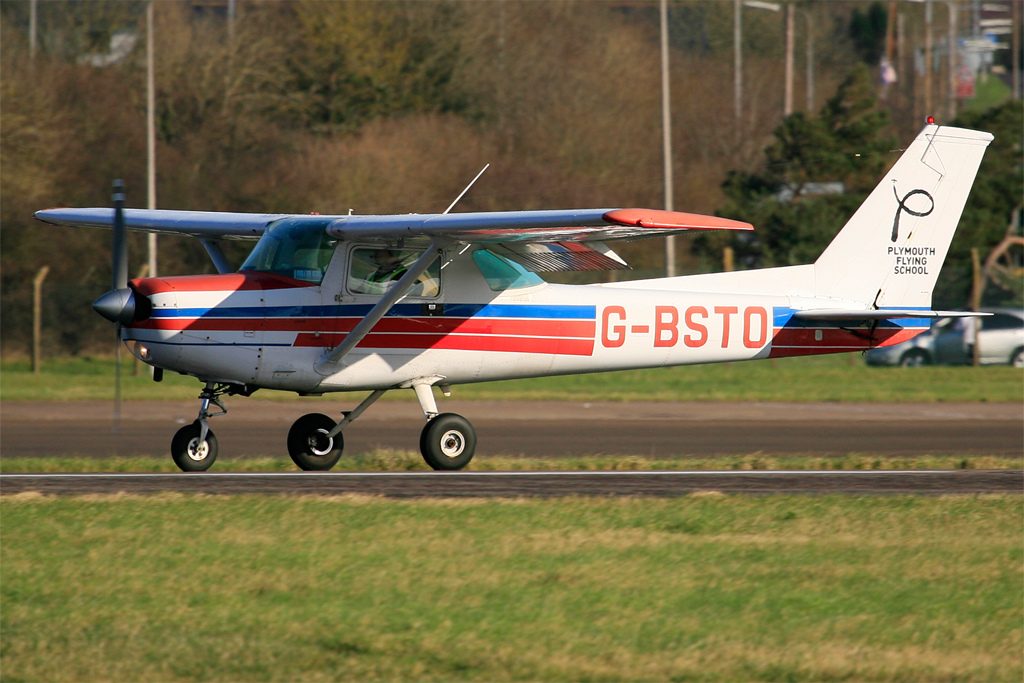
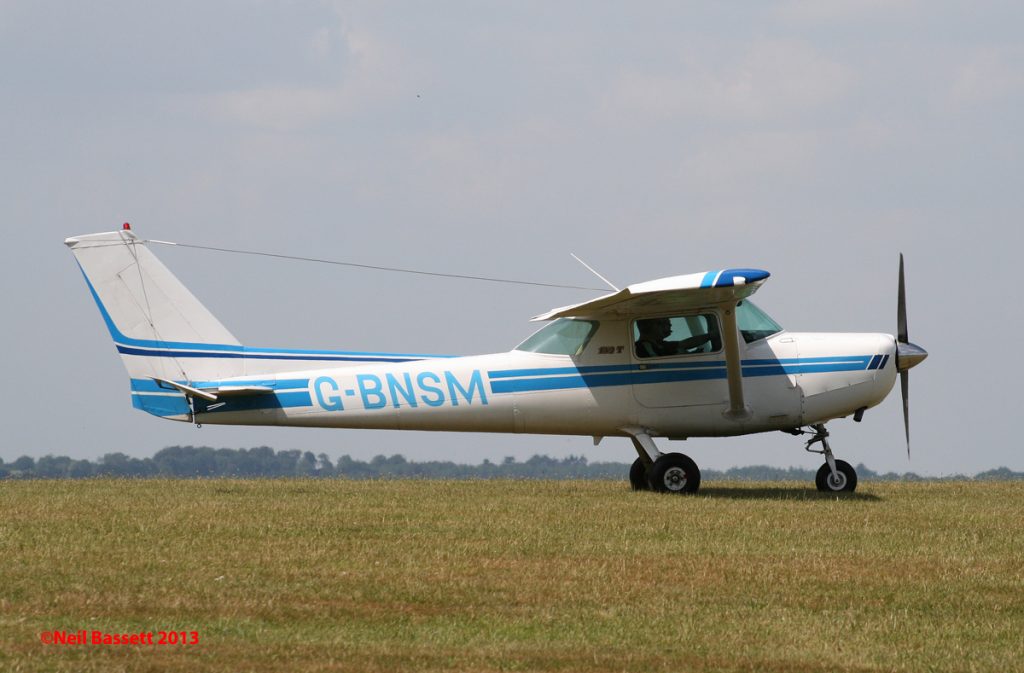
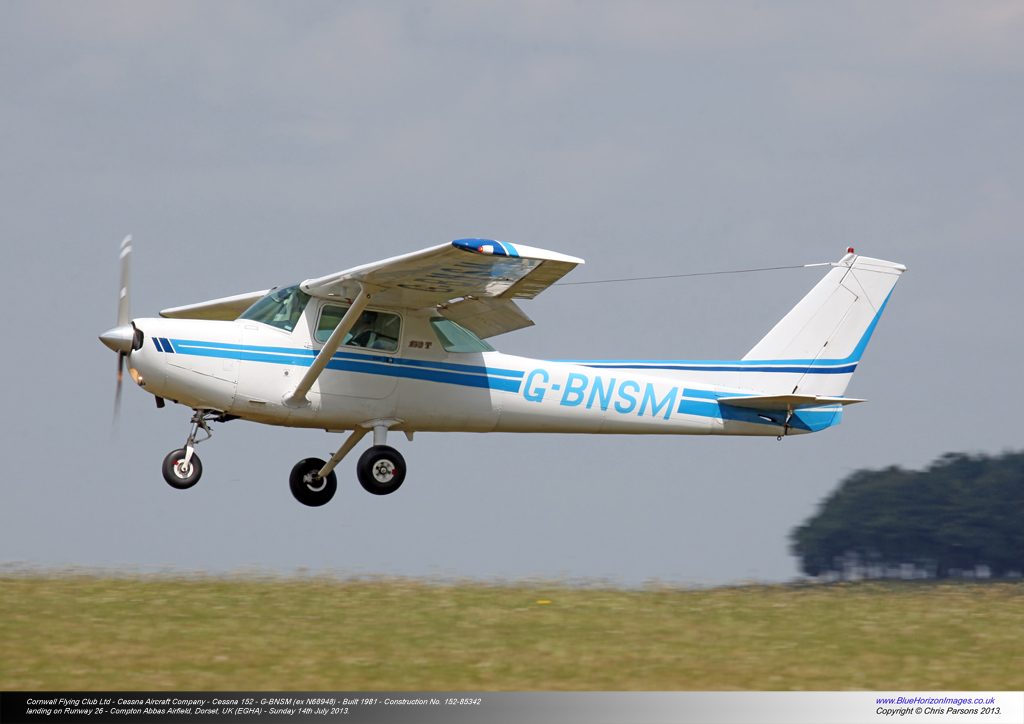
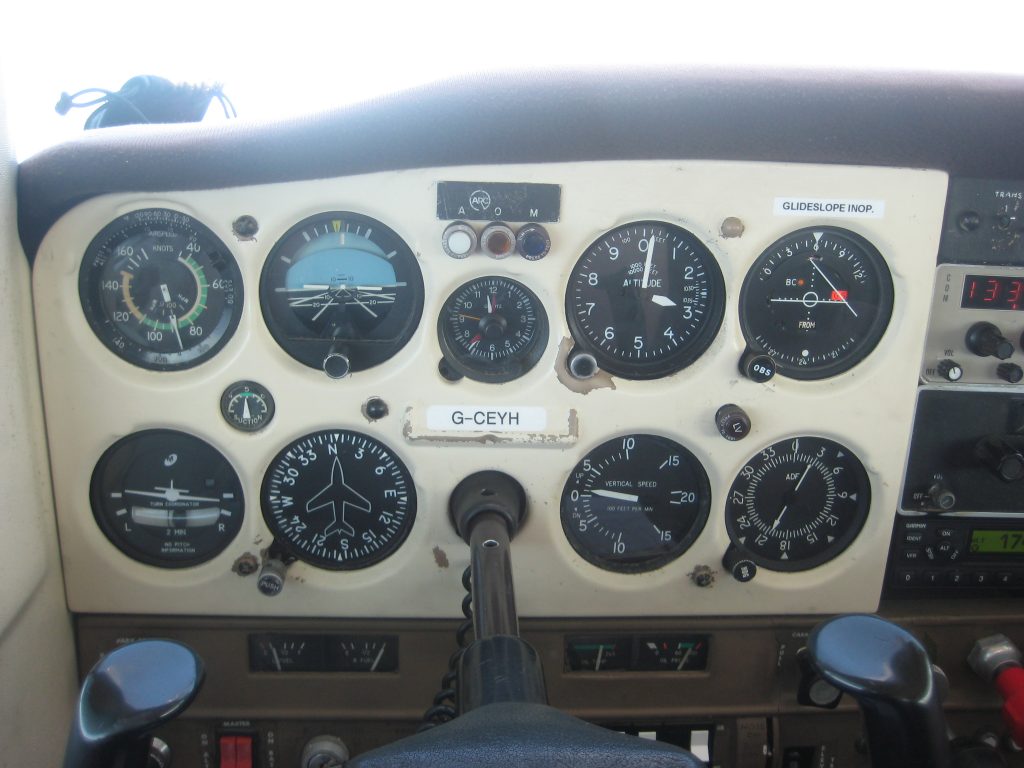
Back when I was a kid and my dad still flew, we used to go up in a Warrior or Archer. I still remember “Cherokee 71 Kilo” as one we rented most often. Good times.
Yeah, I remember you’d said that you used to fly with your dad. Good times indeed! 🙂